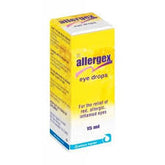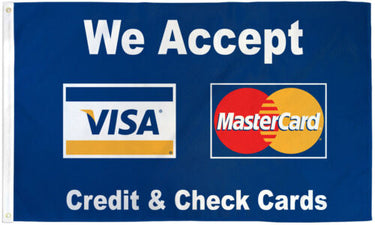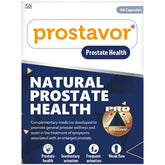Heat exhaustion and heatstroke
Heat exhaustion and heatstroke are serious conditions caused by prolonged exposure to high temperatures, especially when combined with high humidity and physical exertion. This guide covers the definitions, symptoms, causes, diagnosis, treatments, prevention, and more.
Definition
Heat Exhaustion
Heat exhaustion is a condition that occurs when the body overheats. It can develop after prolonged exposure to high temperatures and inadequate fluid intake. Heat exhaustion can lead to heatstroke if not treated promptly.
Heatstroke
Heatstroke, also known as sunstroke, is a severe heat-related illness that occurs when the body's temperature regulation system fails. It is a medical emergency that can cause damage to vital organs and even death if not treated immediately.
Symptoms
Heat Exhaustion
Symptoms of heat exhaustion include:
- Heavy sweating
- Weakness or fatigue
- Dizziness or light-headedness
- Nausea or vomiting
- Muscle cramps
- Cool, moist skin with goosebumps in the heat
- Headache
- Rapid heartbeat
Heatstroke
Symptoms of heatstroke include:
- High body temperature (104°F or higher)
- Altered mental state or behavior (confusion, agitation, slurred speech)
- Hot, dry skin or profuse sweating
- Nausea and vomiting
- Flushed skin
- Rapid, shallow breathing
- Racing heart rate
- Headache
- Loss of consciousness or coma
Causes
Both conditions are caused by prolonged exposure to high temperatures, particularly when combined with dehydration and physical exertion. Common causes include:
- High Humidity: Prevents sweat from evaporating and cooling the body.
- Physical Activity: Increases body heat production.
- Inadequate Hydration: Reduces the body's ability to sweat and cool down.
- Environmental Factors: Lack of shade, breeze, or air conditioning.
Diagnosis
Heat Exhaustion
Diagnosis is based on:
- Medical History and Symptoms: Reviewing recent activities and exposure to heat.
- Physical Examination: Checking for signs of dehydration and heat exhaustion.
Heatstroke
Diagnosis involves:
- Body Temperature Measurement: Using a rectal thermometer to check for a core body temperature of 104°F or higher.
- Physical Examination: Assessing neurological function and signs of organ damage.
- Blood Tests: Checking for signs of organ damage, electrolyte imbalances, and dehydration.
Treatments and Medication
Heat Exhaustion
Treatment includes:
- Moving to a Cooler Environment: Get out of the heat and into a shaded or air-conditioned area.
- Hydration: Drink cool water or sports drinks to replenish fluids and electrolytes.
- Rest: Lie down and rest in a cool place.
- Cooling Measures: Apply cool, wet cloths to the skin or take a cool shower or bath.
Heatstroke
Heatstroke requires emergency medical treatment:
- Call 911: Immediate medical attention is essential.
- Cool the Person Down: Move them to a cooler environment and use any available means to cool them, such as ice packs, cool water immersion, or fanning while misting with water.
- Monitor Temperature: Aim to reduce body temperature to 102°F (38.9°C) as quickly as possible.
- Rehydration: Administer IV fluids if the person is unable to drink.
Prevention
Preventive measures for heat exhaustion and heatstroke include:
- Stay Hydrated: Drink plenty of fluids, especially water and electrolyte-replenishing drinks.
- Avoid Direct Sunlight: Stay in the shade or indoors during peak heat hours (10 a.m. to 4 p.m.).
- Wear Appropriate Clothing: Light-colored, loose-fitting clothing helps keep the body cool.
- Use Sunscreen: Protect your skin from sunburn, which affects the body's ability to cool itself.
- Take Breaks: Rest often in cool or shaded areas when working or exercising in hot weather.
- Acclimate to the Heat: Gradually increase exposure to high temperatures to build tolerance.
Natural Remedies
While natural remedies cannot replace medical treatment for severe cases, they can help manage mild heat exhaustion:
- Coconut Water: Rich in electrolytes, it helps with rehydration.
- Peppermint Tea: Cooling effect when consumed cold or used as a compress.
- Aloe Vera: Applying aloe vera gel can cool and soothe the skin.
- Cool Baths: Immersing in a cool bath can help lower body temperature.
Complications
If not treated promptly, heat exhaustion and heatstroke can lead to severe complications, including:
- Organ Damage: Prolonged high body temperature can damage the brain, heart, kidneys, and muscles.
- Heat Cramps: Painful muscle contractions due to electrolyte imbalances.
- Heat Rash: Skin irritation from excessive sweating.
- Shock: Severe dehydration and overheating can lead to shock.
Myths About Heat Exhaustion and Heatstroke
Myth 1: Only Athletes Get Heat-Related Illnesses
- Fact: Anyone can suffer from heat exhaustion or heatstroke, especially the elderly, young children, and those with chronic illnesses.
Myth 2: You Only Need Water to Stay Hydrated
- Fact: Electrolyte-replenishing drinks are also important, especially during prolonged physical activity in the heat.
Supportive Care
Supportive care for heat-related illnesses includes:
- Education: Learn about the risks and symptoms of heat exhaustion and heatstroke.
- Community Resources: Utilize cooling centers during heatwaves.
- Regular Check-Ins: Monitor vulnerable individuals (elderly, young children) during hot weather.
When to See a Doctor
Seek medical attention if:
- Symptoms of heat exhaustion do not improve within 30 minutes.
- The person shows signs of heatstroke, such as confusion, loss of consciousness, or a body temperature of 104°F (40°C) or higher.
- There are signs of dehydration, such as dark urine, dry mouth, or dizziness.
Coping and Support
For Patients
- Stay Informed: Know the signs and symptoms of heat-related illnesses.
- Stay Connected: Keep in touch with family or friends who can assist in an emergency.
- Take Precautions: Plan outdoor activities for cooler parts of the day.
For Caregivers
- Monitor Vulnerable Individuals: Pay extra attention to the elderly, children, and those with chronic health conditions.
- Encourage Hydration: Ensure those in your care drink plenty of fluids.
- Provide Cool Spaces: Make sure there is access to air conditioning or fans.
Conclusion
Heat exhaustion and heatstroke are serious conditions that require immediate attention and can be prevented with proper precautions. Understanding the causes, symptoms, and treatments can help you stay safe and protect others during hot weather. If you or someone you know is experiencing symptoms, seek medical help immediately
- Complication of Heat exhaustion and heatstroke
- Diagnosis of Heat exhaustion and heatstroke
- Heat exhaustion and heatstroke
- Heat exhaustion and heatstroke myths
- How is Heat exhaustion and heatstroke treated?
- Medicine for Heat exhaustion and heatstroke
- Remedies for Heat exhaustion and heatstroke
- Support for Heat exhaustion and heatstroke
- Symptoms associated with Heat exhaustion and heatstroke
- The best British Online Pharmacy
- Top 10 UK Pharmacies
- Treatment for Heat exhaustion and heatstroke
- What causes Heat exhaustion and heatstroke
- What is Heat exhaustion and heatstroke
- Where can I buy medicine for Heat exhaustion and heatstroke in the UK
- ZimSeller Pharmacy



















